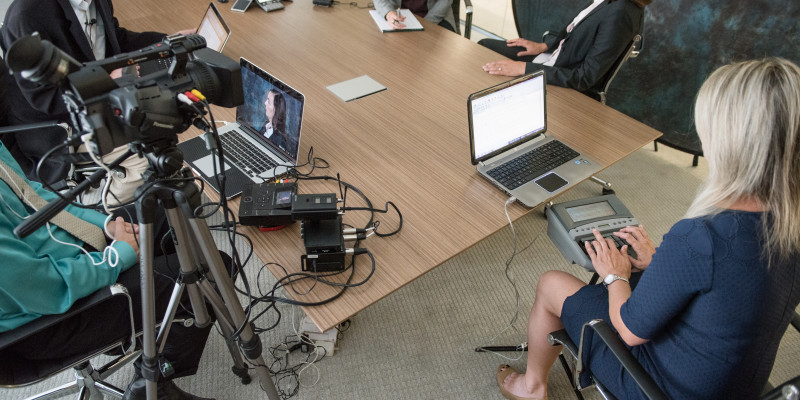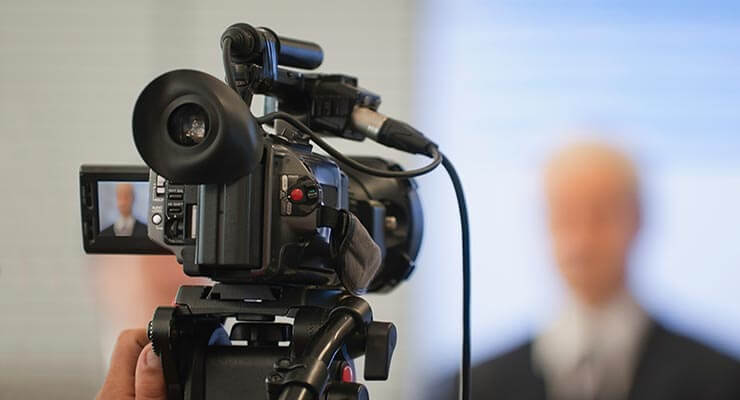Why Legal Videography Is Important for Modern Litigation Processes
Comprehending the Relevance of Videography in Legal Procedures
The assimilation of videography right into legal procedures has arised as a substantial factor in the discussion and interpretation of evidence. By recording aesthetic aspects such as body language and facial expressions, videography improves the narrative surrounding witness testimonies and can profoundly affect court assumptions.
Role of Videography forthcoming
Videography plays a progressively crucial duty in legal procedures, working as an effective medium for presenting proof. The assimilation of video recordings into the lawful structure enables for an extra dynamic representation of realities, making it possible for judges and jurors to picture occasions as they took place. This visual documents can include a series of products, consisting of surveillance video footage, tape-recorded witness testaments, and expert presentations, every one of which can substantially improve the evidentiary landscape.
One of the main advantages of videography is its capability to capture nuances that might be lost in composed accounts. Face expressions, body language, and situational context can supply essential understandings, assisting to communicate feelings and intents that message alone can not. The usage of video clip evidence promotes an extra engaging courtroom experience, possibly helping jurors in understanding complicated instances.
As innovation advancements, the top quality and accessibility of videographic proof have actually enhanced, making it an indispensable component of modern legal methods. Courts increasingly identify the value of video as a trusted source of details, triggering legal professionals to adjust their approaches for proof discussion. Ultimately, videography offers not only to highlight truths but likewise to boost the total honesty of the judicial procedure.

Enhancing Reputation and Clarity
A considerable advantage of including videography in legal procedures is its ability to improve both trustworthiness and quality of evidence provided in court. Videographic evidence can record subtleties that created files might forget, such as tone, body movement, and context. This graph enables courts and courts to better understand the circumstances surrounding the case, thereby cultivating a more precise understanding of the occasions in question.

In addition, the clearness paid for by videography lowers the likelihood of false impression that can occur from textual summaries. This accuracy is specifically essential in complicated instances, where information can be easily misinterpreted. Inevitably, by offering evidence in a visually accessible layout, videography not only strengthens the integrity of the judicial procedure yet also supports informed decision-making by those involved in legal process.
Influence On Jury Perception
The incorporation of videographic proof substantially affects court assumption, typically leading to much more engaged and educated deliberations. Jurors are usually a lot more responsive to aesthetic information, which can improve their understanding of complicated instances. Videography offers realities in a fashion that is both available and engaging, enabling jurors to get in touch with the evidence on an extra individual level.
In addition, the capacity to witness occasions as they took place can stimulate emotional reactions that composed transcripts or spoken testimonies might fail to generate. This psychological involvement can lead jurors to create more powerful point of views concerning the integrity of witnesses and the overall story of the instance. The graph of proof likewise helps in clearing up obscurities, making it much easier for jurors to comprehend the context and value of the details provided.
In addition, videography can work as a powerful device for storytelling, allowing lawyers to create an influential story that resonates with the jury. When jurors can visualize situations and witness key minutes, their capacity to purposeful attentively and reach an educated decision is considerably you can look here boosted, inevitably influencing the end result of legal procedures.
Finest Practices for Legal Videography
Carrying out finest practices in legal videography is crucial for making certain that aesthetic evidence is both efficient and trustworthy in the court. First, select certified experts who focus on lawful videography to guarantee the technological top quality of the recordings. This consists of making use of high-resolution video cameras and specialist sound equipment to catch clear visuals and sound.
2nd, keep proper paperwork throughout the recording procedure. This involves producing a thorough log that consists of timestamps, descriptions of the web content, and the identifications of all people present. Such documents can reinforce the authenticity of the video clip.

In addition, consider the usage of suitable modifying strategies. While it is vital to preserve the original content, minor modifications for quality-- such as enhancing audio levels-- can improve the general presentation without modifying the compound.
Future Trends in Legal Videography
As legal videography remains helpful hints to advance, emerging techniques and technologies are forming the future landscape of visual evidence in the courtroom (Legal Videography). One significant fad is the integration of high-def and 4K video clip top quality, boosting the clarity and detail of taped testaments and evidence. This better resolution aids jurors in comprehensively examining the reliability of witnesses and the subtleties of the here and now products
Additionally, the usage of expert system (AI) in video analysis is obtaining grip. AI tools can help in recognizing crucial moments in video footage, producing transcripts, and even evaluating non-verbal communication, which supplies deeper understandings right into witness integrity. Digital reality (VR) and enhanced truth (AR) are poised to change just how proof is presented, allowing jurors to immerse themselves in crime scenes or circumstances, therefore cultivating a more extensive understanding of the context.
Conclusion
In summary, videography offers as an essential device in lawful process, improving the discussion of evidence and enriching the total understanding of situations. By catching non-verbal hints and boosting the reliability of witness accounts, videography significantly affects jury perception and decision-making processes - Legal Videography. Sticking to best methods makes sure the performance of legal videography, while emerging patterns promise to further increase its duty in the judicial system, inevitably fostering a much more informed and engaged legal setting
Videography plays an increasingly essential role in lawful proceedings, serving as a powerful medium for providing evidence.A significant advantage of incorporating videography in lawful process is its ability to enhance both reputation and clearness of evidence provided Website in court. Eventually, by presenting proof in an aesthetically obtainable format, videography not only enhances the stability of the judicial procedure yet also supports educated decision-making by those included in lawful process.
In recap, videography offers as an indispensable tool in legal proceedings, enhancing the discussion of proof and enriching the overall understanding of situations. Legal Videography. Adhering to best practices makes sure the efficiency of legal videography, while emerging trends promise to further boost its duty in the judicial system, inevitably cultivating an extra educated and involved lawful setting